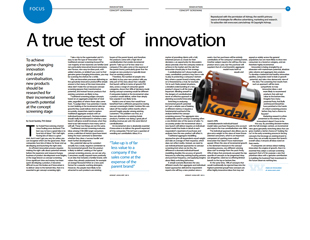TNS present at MRMW
Submitted by Anonymous on
 25 September 2014: Bob Burgoyne presented the findings from a ground-breaking study at the Mobile Research in the Mobile World conference in Berlin, Germany.
25 September 2014: Bob Burgoyne presented the findings from a ground-breaking study at the Mobile Research in the Mobile World conference in Berlin, Germany.

Virtual reality is the next big thing in digital, with virtual environments spreading beyond the gaming and entertainment worlds and hitting the mainstream in the form of Oculus Rift, HTC Vive and Sony Playstation VR. These products have consumers and the mainstream media excited.
It’s increasingly said that today’s brands are the sum of consumer experiences – and that marketers are in the business of selling customer journeys rather than simply stand-alone products. The problem they face, though, is that very few people are interested in buying complete, off-the-shelf, pre-defined customer journeys. In an era of personalisation, they want to assemble their own: using the touchpoints of their choosing for the purposes of their choosing and at the moments of their choosing.
In a rapidly changing digital landscape, marketers must re-think the roles that their brands play in consumers' lives – and how they bring those roles to life across platforms and touchpoints. To be effective, they need a means of targeting consumers with seamless, relevant experiences as they move between devices; they need a deeper understanding of the emotions their brand experiences generate, and they need the capacity to respond to these insights in real-time. In other words, they need research that adapts to the new marketing agenda.
 What do meaningfully personalised consumer experiences look like in 2016? Consumers quickly get frustrated by clumsy use of personal information or behavioural targeting that defines them on the basis of a single action and bombards them with often irrelevant or outdated messages. They start to feel deeper discomfort when those messages follow them insistently around their digital lives. At the same time though, they expect their brand interactions to reflect increasingly personalised digital media experiences. How can marketers stay relevant without leaving their audiences feeling uncomfortable?
What do meaningfully personalised consumer experiences look like in 2016? Consumers quickly get frustrated by clumsy use of personal information or behavioural targeting that defines them on the basis of a single action and bombards them with often irrelevant or outdated messages. They start to feel deeper discomfort when those messages follow them insistently around their digital lives. At the same time though, they expect their brand interactions to reflect increasingly personalised digital media experiences. How can marketers stay relevant without leaving their audiences feeling uncomfortable?
Tracking individuals across different devices is both technically difficult and vulnerable to regulatory challenges. However, as Sameer Desai of Mundipharma explains in this interview, there are other ways of delivering relevant content to consumers. By combining in-depth consumer segmentation with programmatic targeting techniques and look-alike models, marketers can ensure that they are targeting only those people who are genuinely interested in and open to spending more with their brand. Applying such data-driven targeting has enabled Holiday Inn Hotels to drive uplifts in conversions of more than 500%.
Marketers must not only customise their approach to different audiences, but to the different contexts in which they encounter them. As different social platforms take on particular roles in people’s lives, it’s important for the tone and style of brand communications to adapt to each channel. Understanding consumer motivations in different social spaces is the key to delivering marketing that is both engaging and shareable.
This is all the more important given social media’s increasingly open-ended role in brand-consumer relationships, with people expecting to conduct all types of brand interaction through the channels of their choice. This might involve consuming content, but could also involve browsing products, interacting with customer service, and completing purchases. Unless marketers can enable a full range of brand experiences on the right social channels, they risk frustrating their potential buyers.
 Consumers may be spending a greater total amount of time on digital platforms, but that time is hugely fragmented – and contains huge variations in how open they are to engaging with brands. Marketers must adapt to an environment in which people jump nimbly between disappearing Snapchat messages and 6-second Vine videos, regularly skipping past videos after the first three seconds and providing ever-narrower attention spans for brands to aim at. To engage an audience, marketers must increasingly compete within these micro-moments, adjusting both creative and planning strategy to fit. Get it wrong, and they will be guilty of interrupting and irritating connected consumers. Get it right, and they will be able to turn in-the-moment relevance into longer-term engagement.
Consumers may be spending a greater total amount of time on digital platforms, but that time is hugely fragmented – and contains huge variations in how open they are to engaging with brands. Marketers must adapt to an environment in which people jump nimbly between disappearing Snapchat messages and 6-second Vine videos, regularly skipping past videos after the first three seconds and providing ever-narrower attention spans for brands to aim at. To engage an audience, marketers must increasingly compete within these micro-moments, adjusting both creative and planning strategy to fit. Get it wrong, and they will be guilty of interrupting and irritating connected consumers. Get it right, and they will be able to turn in-the-moment relevance into longer-term engagement.
Dealing with Big Data has topped the agenda of many marketing departments over the past year – and it will continue to do so in 2016. However, simply dealing with data as it arrives is unlikely to give brands a competitive advantage. As Caspar Schlickum of the digital media platform Xaxis points out,  marketers need strategic thinking to shape the types of data that they collect – and how they combine that data with other sources of insight. When marketers plan data collection and analysis on the basis of the end-user experiences they want to deliver, they are far more likely to deliver the intuitive experiences that people want.
marketers need strategic thinking to shape the types of data that they collect – and how they combine that data with other sources of insight. When marketers plan data collection and analysis on the basis of the end-user experiences they want to deliver, they are far more likely to deliver the intuitive experiences that people want.
Through social media, we have more data available than ever before on people’s behaviour, interests and motivations. We also know more than ever about the emotions generated by their different experiences of a brand. TNS already uses the analysis of social media conversations to provide near real-time feedback on anything from the emotive power of advertising to the depth of loyalty being created by customer experiences. Maximising the potential of such insight involves researchers thinking outside of the siloes that have dominated our industry in the past. Information can no longer be compartmentalised between ‘communications effectiveness’, ‘corporate reputation’, ‘product launch evaluation’ or ‘customer experience management’.  Connected consumers view their experience of a brand in a seamless, holistic way. It’s important that both marketers and researchers do the same.
Connected consumers view their experience of a brand in a seamless, holistic way. It’s important that both marketers and researchers do the same.
 Marketers need sophisticated information which enables them to look to the future, not the past, says Rosie Hawkins, global head of brand and communication at TNS
Marketers need sophisticated information which enables them to look to the future, not the past, says Rosie Hawkins, global head of brand and communication at TNS
New forms of social platforms present a new set of challenges for brands – and they can’t afford to duck them
Submitted by Anonymous on
 25 September 2014: Bob Burgoyne presented the findings from a ground-breaking study at the Mobile Research in the Mobile World conference in Berlin, Germany.
25 September 2014: Bob Burgoyne presented the findings from a ground-breaking study at the Mobile Research in the Mobile World conference in Berlin, Germany.
Submitted by Anonymous on
With every year that passes, our phones seem to take on increasing significance in supporting our lives. Now in its eighth year, our annual Mobile Life study looks at how people use their phones, why they do what they do and the implications for brands. As showrooming continues to threaten the high street, we look at ways in which brands can use mobile to interact with people and influence their behaviour in store.
Submitted by Anonymous on
Submitted by Anonymous on

To achieve game-changing innovation, incremental growth potential must be identified early: David Soulsby in Admap.

©1998 - 2025 Kantar Belgium, a Kantar Group Company - All rights reserved